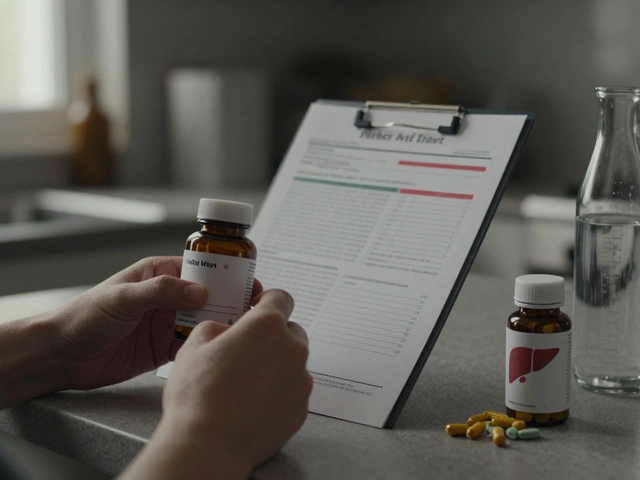- Home
- Medical Travel Support
- What to Expect if an American Visits a Hospital in Europe: Costs, Care, and Surprises

What to Expect if an American Visits a Hospital in Europe: Costs, Care, and Surprises
Imagine you’re exploring cobbled streets in Rome when you slip on rain-soaked stones, or maybe you’re in Paris and your appendix decides it’s had enough. Now you’re staring at the inside of a European hospital, panicked about what comes next. Forget what you’ve heard at home—this is a whole different experience, sometimes shockingly good, occasionally a little bewildering, but always memorable. American anxieties about sky-high medical bills or language barriers are about to get flipped upside down. Truth is, navigating a European hospital as a U.S. visitor is more affordable, sometimes way more efficient, and—believe it or not—often less stressful than trying to untangle a U.S. ER’s web of billing and forms.
What Happens from the Minute You Walk In
First thing to know: you probably won’t need to pull out your credit card at the hospital door. In Europe, most hospitals have a public, government-funded setup. That means front desk staff aren’t there to check your insurance papers or collect massive co-pays. They want to know what’s wrong and how they can sort you out quickly. You’ll be registered, and they might check your passport or ID. Don’t worry—they’re used to tourists needing help. English is spoken at least basically in almost every European emergency room, especially in big cities and in places where tourists keep getting themselves into trouble.
Feeling nervous about the language? Bring your phone with a translator app—odds are you’ll only need it if you get somewhere remote. Medical forms might look unfamiliar, but if you’re polite and explain you’re American, someone will usually walk you through the process. In hospital lobbies from Amsterdam to Athens, Americans share one expression: disbelief at how straightforward things are. One study from 2023 found that nearly 80% of U.S. tourists treated for emergencies in European hospitals rated staff friendliness higher than in the U.S.—largely because no one was hovering with a clipboard, asking about payment up front.
If your situation is urgent—broken bone, chest pain, a weird rash—you get triaged, meaning a nurse decides how serious it is and bumps you up or down the priority line. Nobody cares if you don’t have insurance; they care if you’re about to faint. Worried about fancy MRI scans or surgery? Europe doesn’t skimp. Most countries in Western Europe have newer hospital gear than the U.S. average, according to a 2024 report by the European Society of Radiology. You’ll get appropriate care based strictly on your medical need, not your wallet.
Got travel insurance? That’ll help you race through paperwork and get money back faster, but you’ll never be denied care if you don’t have it. Expect to get the same tests, X-rays, IVs, and medication as locals. If you end up in a private hospital—less common, but possible if you’re staying at a fancy resort or in Monaco—there may be a request for payment or guarantee before you’re discharged. Even then, it won’t feel like hospital billing in the States.
If you need help after-hours, nearly every city has a 24/7 emergency service. Ambulances in most European countries are either free or come with a set low fee (like €50 in France). Sometimes you’ll ride with an advanced paramedic team—not just drivers, but people who start care right away. Paramedics won’t ask you about insurance until you’re stabilized, and U.S. visitors are often surprised to find their first trip in a flashy Euro-ambulance costs less than a fast-food meal back home.
Paying the Bill: Way Cheaper Than You'd Think
This is the part where most Americans get wide-eyed. Hospital treatment costs in Europe are dramatically lower than what you see in U.S. cities. Europe’s public healthcare is meant to serve everyone, and tourists don’t get charged a crazy premium for not being a citizen. Here’s what you might pay for common emergencies:
| Treatment | Avg. Cost in U.S. (USD) | Avg. Cost in Europe (USD) |
|---|---|---|
| ER Visit (no hospitalization) | $1,220 | $100 - $250 |
| Broken Arm (X-ray, casting, discharge) | $3,500 | $200 - $600 |
| Appendectomy (uncomplicated) | $15,000 - $25,000 | $2,000 - $4,000 |
| Ambulance Ride | $900 | $50 - $120 |
So where’s the catch? You may be billed after your treatment, sometimes a couple months later if the hospital needs time to process your info. Many tourists pay on the spot, especially if charges are small—a few hundred dollars, not thousands. If your insurance covers international care, keep all receipts, forms, and doctor’s statements. Some American credit cards even offer emergency medical reimbursement if you paid for the trip with their card.
Don’t panic if you get a bill weeks after you’re home. European hospitals won’t threaten to send collectors instantly. You’ll usually have time, and often, you can pay remotely with a credit card. No hidden fees, no shifty double billing. Medical bankruptcy—common in the U.S.—is almost unheard of even for visitors across the pond. Hospitals just don’t hand patients five-digit bills for a couple stitches and an aspirin.
One pro tip: if your treatment is something routine (say, an infected cut or a quick test), ask about "urgent care" centers or clinics. These are everywhere in Europe, even in small towns. Care is even cheaper here—sometimes free—and you’ll face shorter waits. Pharmacists in countries like Spain, Portugal, and Germany are also allowed to offer advice and prescribe basic meds without needing a doctor's note, saving you both time and money.

Quality of Care: Not Just Different, Sometimes Better
Some Americans imagine European hospitals as old-fashioned or minimal, but that’s rarely the case. Health systems in France, Germany, the UK, the Netherlands, and Scandinavia rank at the top worldwide for outcomes, survival rates, and patient satisfaction. A 2024 Bloomberg Health study listed Spain and Italy as having the longest average life expectancies, linked to preventive care and easy hospital access. Walk through a hospital in Copenhagen or Zurich, and you’ll find spotless wards, private rooms, and tech as modern as anything in New York or Chicago.
The key difference is that there’s less red tape. You won’t get endless forms to sign. Doctors get straight to the point. In many countries, nurses do much of the legwork, giving medicines, explaining follow-ups, and even helping with language barriers. If you’re admitted overnight, expect a comfy—though maybe not luxurious—room. French, Dutch, and Swedish hospitals are famous for chef-prepared meals and patient-first attitudes. And yeah, you can joke with the staff. They may be more relaxed than you’d believe.
Worried about mishaps? European hospitals face their own challenges. For example, you might have to wait longer if your problem isn’t urgent—think four hours with a sprained ankle in London or Madrid. Specialists might see you on a later date, especially in public hospitals, where resources are strictly triaged. But for serious issues, like heart attacks or broken bones, you’ll get high-speed expert care. If you want extra comfort—private room, English-speaking specialist—some cities offer private hospitals. Costs are a little higher but still nothing like the U.S.
Another interesting thing: Experimental or new treatments aren’t always available everywhere. Europe values proven therapies, so sometimes they avoid aggressive interventions unless medically necessary. However, this “less is more” approach often means lower risks and faster recoveries. You’ll get all the standard scans, lab tests, and specialist consults, but every step aims to treat, not to bill.
If you feel anxious or miss information, don’t be shy—ask for an English-speaking social worker, or see if the hospital has an “international patient desk.” Spanish, French, German, and Italian hospitals serving big cities almost always have someone on duty for foreigners. Most doctors studied in English at some point, and younger staff tend to speak it fluently. You won’t find yourself lost in translation.
Smart Tips Before You Travel (and What to Do If You're Sick)
Okay, so you’re convinced it’s not a horror story—but how can you make things easier if you suddenly end up needing care in Europe? Two words: Pack smart. Always bring a list of your medications and allergies. If you need regular treatments (like insulin or inhalers), pack extra and bring copies of your prescriptions. Use your phone to take photos of critical info, like your insurance card and emergency contacts.
Buy travel insurance—even though most European hospitals are a bargain, insurance helps with big stuff and lets you skip lines at private clinics. The most important American in Europe hospital panic solution: call your insurer the second you’re ill or hurt, so they can point you to a covered doctor or fax confirmation to the hospital. Be honest about how you got hurt; if you were rock climbing or riding an e-scooter, many policies won’t pay unless you bought the right activity coverage.
If you’re traveling with someone, teach them a few common phrases: "I need a doctor", "allergic to…", "pain in…". Google Translate works wonders, but being able to say "Where is the hospital?" in French or German can save precious time. Learn the European emergency number—112; it works in every EU country for police, fire, or medical help.
Most medicines Americans need are available at European pharmacies, but some brand names differ. Bring your drugs in their original bottles, and avoid mailing yourself prescription meds. Customs can be strict about unlabeled pills. For minor issues—sore throats, stomach bugs—pharmacies are almost always your best bet. Staff can diagnose and suggest what you need, and their English is usually decent.
Traveling with kids or elderly relatives? Choose hotels near city centers, since hospitals in Europe aren’t always in suburban sprawl like in the States. Keep your passport or national ID handy—you’ll need it to register for care. And stay calm; most doctors and nurses genuinely like helping visitors. They’ve seen it all, from honeymooners with bad sunburns to backpackers with scooter mishaps. If you have serious allergies or conditions, consider wearing a medical bracelet in big letters: ER staff check wrists first.
Wrap all that up, and you’re ready to explore Europe without worrying about hospital surprises. For Americans, the real shock isn’t the price tag—it’s how simple, patient-friendly, and fair European hospitals feel. Your main task? Focus on getting better, not on the fear of a crippling bill.

Arnav Singh
I am a health expert with a focus on medicine-related topics in India. My work involves researching and writing articles that aim to inform and educate readers about health and wellness practices. I enjoy exploring the intersections of traditional and modern medicine and how they impact healthcare in the Indian context. Writing for various health magazines and platforms allows me to share my insights with a wider audience.
About
Medical Resource Center India is a comprehensive online platform dedicated to providing reliable health information and medical resources in India. Explore a wide range of articles, tips, and advice on medicine, healthcare services, and wellness. Stay informed about the latest developments in Indian medicine and access valuable insights into maintaining a healthy lifestyle. Discover expert guidance and health solutions tailored for every Indian citizen. Your go-to destination for authoritative medical knowledge in India.






